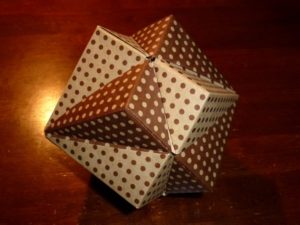You keep a writing notebook, right?
Years ago I attended an exhibition of Picasso’s sketch pads and notebooks. People thronged the museum fascinated with the charcoal and pencil scratchings of a 20th century oil painting master. Most of the sketches were loose, ad hoc, even sloppy. None of Picasso’s originals were on display, only his sketches.
What drives my fascination with the exhibit are not the sketches themselves. As artifacts, yes, they were captivating. (Imagine page upon page of the best doodles you ever saw.) What was more fascinating was their role as the connective tissue between Picasso’s imagination and the masterpieces he produced over a lifetime.
We have no analogue in the world of fiction. Perhaps Hemingway’s or Henry James’ notebooks are studied by literature students, but I can’t imagine the notebooks of even the most famous writers drawing the attention of Picasso’s (although some of those writing notebooks are not forgotten).
Don’t keep a writing notebook for posterity. Don’t expect anyone but yourself to read it. But if you have any interest in creative writing, I recommend keeping a notebook. If it was good enough for Picasso—and Hemingway, and Henry James—it’s good enough for you.
Not an organizer
Let’s get this out of the way: A writing notebook is not an organizer. Keep your to-do lists somewhere else.
I actually have two notebooks, one for inspiration and ideas, the second to organize the nuts-and-bolts of my writing: Reminders to produce treatments, send query letters, and so forth. For this more business-like organizer, I follow a simplified version of the Bullet Journal approach, which has served me well for years now.
You’ll be tempted to keep your organizer and writing notebook in the same physical book. I caution against it. An organizer is exactly that, a place of constraint, rigidity, and order. (In other words, it’s to get things done.) A writing notebook needs to be a free-form place. It’s for random ideas, bits of dialogue, strange notions, bits of fleeting language disconnected from anything rational. A writing notebook can even hold drawings, things like maps or bizarre flora & fauna.
I separate my organizer from my writing notebook for a reason. If I combine them, they’ll blend, and I’ll find myself attempting to organize my creative notions. And, likewise, the free-flowing pages will make it more difficult to find the organized lists.
I’ve inhabited a number of different writing notebooks over the years. I once went through a series of the ever-trendy Moleskines, pocket-sized and hardbound with their handy elastic band to keep the book shut. Most memorable is their twee “As a reward: $______” on the inside cover, allowing the owner a chance to estimate the dollar value of their own musings.
There exists numerous Moleskine knock-offs that are fine for the job. I’ve gone through several brands and can’t recommend any one. To mix things up, I’ve tried other notebook form factors as well. I once experimented with a high school composition notebook, thinking the different size might yield unexpected fruit. (It did, but not in the way I was expecting—which was the entire point.)
Don’t get locked into one writing notebook manufacturer or model. Different paper weight, rule widths, dimensions, and bindings will subtly produce variation in the words you pour across the pages. The same goes for ink and pen types. The only variants I’ve not explored are graph paper (which I fear will introduce too much inflexibility) and unlined paper, which sounds like pure chaos for this writer, a man who barely read his own cursive.
As far as organization, I go minimal with my writing notebook. If I have a story or novel in mind, I’ll write my working title at the top of a fresh page, add the date for my own reference, and start writing. (I usually have at least one title in mind when I reach for my notebook, even if doesn’t survive to the first draft.)
If the idea is a random thought not associated with a story, I’ll give it its own page with the most simplest or basic of titles at the top of the page, only to separate it out from the other work I’m developing.
Even if my idea is merely one or two sentences, I’ll usually give it it’s own page. Don’t fear mostly-empty pages. There’s no reason to be aggressively economical with page use. That’s about as far as I go with organization.
I also don’t worry about being orderly with my entries. For example, I have a novella side-project at the moment. When I longhand narration into my notebook I don’t concern myself with entering the new prose in chapter order. I also don’t worry if what I’m writing follows anything else I’ve written in the preceding pages, or even if I will use it at all in the final work. If I’m inspired to write, I write.
Giving myself the freedom to write whatever I want whenever I want to is important. Artificial barriers such as “I can’t write this until I’ve finished that” merely give me a reason not to write at all, the biggest threat for any writer.
I try to ensure I have my notebook on me whenever I’ll be in a place when I can allow my thoughts to wander and explore. No, I don’t carry it with me at all times. (I don’t even carry my smartphone with me at all times.) If it makes sense for you to keep it on you at all times, do it—but don’t forget to carry a pen as well. One without the other is all-but-worthless.
My writing notebook is also not merely for writing prose. For example, when working on a novel I might have a page or two dedicated entirely to listing the names of the book’s characters. This allows me to swiftly look up a name if it slips my mind while writing chapters. For Bridge Daughter, I had pages of medical terminology, real and fictional, as the novel employed quite a bit of it and I wanted to ensure consistency.
I don’t produce a table of contents or an index for my notebooks (such as how the Bullet Journal system advocates). When I’m entering prose in the computer, I trust myself to recall what I’ve written in my notebooks and dig it out on-demand. (This sometimes means having two notebooks handy when I’m typing, as my ideas for the book may span more than one notebook.)
Nothing is wasted
Returning to Picasso’s notebooks, another impressive aspect was their sheer volume. He produced tons of work he never intended to show or sell. His sketchbooks were for him, not us, and were a means to an end.
I’ve heard of and witnessed writers being stingy with their output. They view five pages of prose in their notebook never being published—or even making it into a working draft—as a “waste.”
Nothing is wasted. All writing is practice for the next round of writing. If you view every word in your writing notebook as precious and must be conserved the way crude oil or drinking water must be conserved, you’re doomed.
Like Picasso, view your writing notebook as a place to be sloppy and free, a place to expend language wantonly. Be verbose, be chatty. Don’t worry about passive voice or tense changes.
I save all my old writing notebooks (for nostalgia, I suppose), but I don’t obsessively mine them for ideas, thinking each little scrap of language or inspiration must be utilized. My notebooks brim with imaginative dead-ends. I’m fine with that. I’d rather my ideas rot in my notebook, off the vine as it were, rather than go to waste on the vine—lost as fleeting thoughts in my head.



